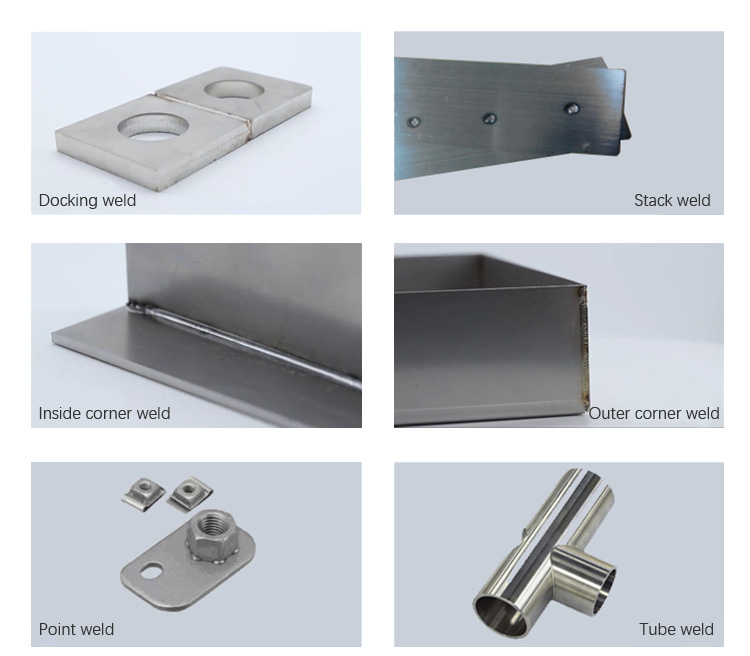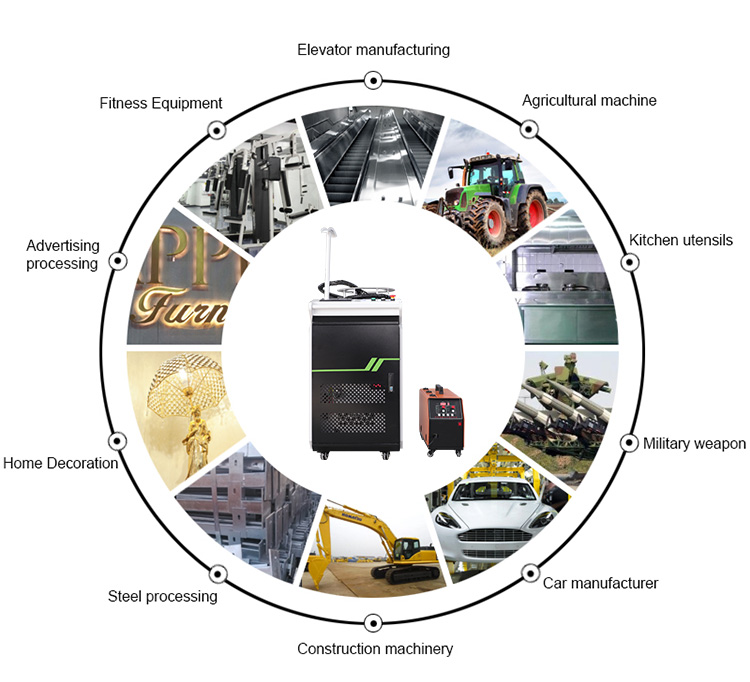Buyer Guide
Advantages of Laser Welding
Laser welding machine is used in the field of welding, and it is one of the important aspects of the application of laser material processing technology. According to its working mode, it can be divided into laser mold welding machine, automatic laser welding machine, and laser spot welding machine , fiber laser welding machine, etc. What are the advantages of laser welding machine?

Laser welding is a fast process compared to traditional welding methods. The focused and intense laser beam enables rapid heating and cooling of the material, leading to efficient and quick welds. This can increase overall productivity in manufacturing.
Laser Welding Advantages
1. After focusing laser, the power density is high. After the high-power low-order mode laser is focused, the focal spot diameter is very small.
2. The laser welding speed is fast, the depth is large, and the deformation is small. Due to the high power density, small holes are formed in the metal material during the laser welding process, and the laser energy is transmitted to the deep part of the workpiece through the small holes, and there is less lateral diffusion. The speed is fast, and the welding area per unit time is large.
3. The welding depth-to-width ratio is large, the specific energy is small, the heat-affected zone is small, and the welding deformation is small. It is especially suitable for the welding of precision and heat-sensitive parts, which can avoid post-weld orthopedic and secondary processing.
4. It can be welded at room temperature or under special conditions, and the welding equipment is simple.
5. It can weld refractory materials, such as titanium, quartz, etc., and can weld materials of different materials, such as copper and tantalum, two metals with completely different properties are welded together, and the effect is good.
6. Micro-welding can be carried out. After the laser beam is focused, a small spot can be obtained, and it can be precisely positioned, which can be applied to the assembly welding of micro and small components in mass automatic production. Not only the production efficiency is greatly improved, but also the heat-affected zone is small and the solder joint is free of pollution, which greatly improves the quality of welding
7. It can weld hard-to-reach parts and implement non-contact long-distance welding, which has great flexibility.
8. Generally, no filler metal is added. If fully protected with inert gas, the weld is free from atmospheric contamination
9. The welding system is highly flexible and easy to automate.
10. Laser welding machine Laser welding is similar to electron beam welding in many aspects, and its welding quality is slightly inferior to electron beam welding, but electron beam can only be transmitted in vacuum, so welding can only be carried out in vacuum, and laser welding technology can Applied in a wider range of work environments.

Disadvantages of Laser Welding
- Laser welding equipment can be significantly more expensive compared to conventional welding machines. The high cost of lasers, optics, and associated components can make it a substantial investment, especially for small-scale or occasional welding applications.
- Laser welding requires specialized knowledge and skills to operate effectively. Operators need training to understand the principles of laser welding, laser safety procedures, and how to optimize welding parameters for different materials and joint configurations. The complexity of laser systems may require additional training and expertise compared to traditional welding methods.
- Laser welding is generally suitable for thin to medium-thickness materials. When it comes to thick sections, laser welding may face challenges due to limited penetration depth. In such cases, alternative welding methods like arc welding may be more suitable.
- Laser welding can be sensitive to certain materials and their properties. For example, highly reflective materials like aluminum or copper can reflect a significant portion of the laser beam, reducing its effectiveness. Similarly, materials with high thermal conductivity can dissipate heat quickly, making it challenging to achieve proper weld penetration.
Why We Choose Metal Laser Welding Machine
1.The handheld laser welding machine is easy to operate and can be welded in two hours, with low labor costs.
2.It is a continuous welding machine with dense beam energy, efficient and high-speed welding, small welding points, small heat affected areas, smooth and beautiful welds, and reduced subsequent polishing processes.
3.It can weld common metal materials such as stainless steel plate, iron plate, galvanized plate, aluminum plate, etc.
4.The handheld laser welding machine does not require a dedicated welding workbench, and the equipment occupies small space. It is flexible in processing and is equipped with several meters of fiber optic extension cables, which can be moved for long-distance operations without being limited by environmental space.
5.The laser is equipped with water cooling equipment to ensure continuous and high-intensity operation.
6.The handheld laser welding machine can not only perform welding operations, but also repair molds and perform simple cutting operations by replacing cutting nozzles. The laser has a lifespan of up to 30 years and can be put into long-term use at once, with high cost-effectiveness.
7.Non-Contact Process: Laser welding is a non-contact method, which means there is no physical contact between the welding tool and the workpiece. This eliminates the need for consumables or electrodes, reducing maintenance and tooling costs.

A laser welding machine is an eco-friendly welding tool that comes with a handheld laser gun, CNC controller, or single-arm robot to join pieces of metals or thermoplastics, which is frequently used in high volume applications with automation, which is based on keyhole or penetration mode welding.
Laser welders are widely used in manufacturing
A laser welder is a thermal welding machine that uses the high heat energy from the laser beam to connect parts together, including spot welding, seam welding, lap edge, T butt, butt joint, lap joint, narrow welds, deep welds and kissing welds. It is typically used by manufacturing businesses in the engineering, medical and electronics industries, through to welding thicker materials in the automotive and aerospace industries. A laser welder is also known as laser welding gun, welding tool, seam welding machine, bonding machine, brazing machine, joining machine, soldering machine.
Metal laser welding machines find applications in various industries, including automotive manufacturing, aerospace, electronics, medical devices, and jewelry production. They are utilized for tasks such as sealing, spot welding, seam welding, and complex joint configurations.


IGOLDEN BLOG
Thank you for visiting the iGOLDENCNC website. iGOLDENCNC is the professional supplier of CNC machinery application solution, within the business of producing and selling CNC machinery and accessories.